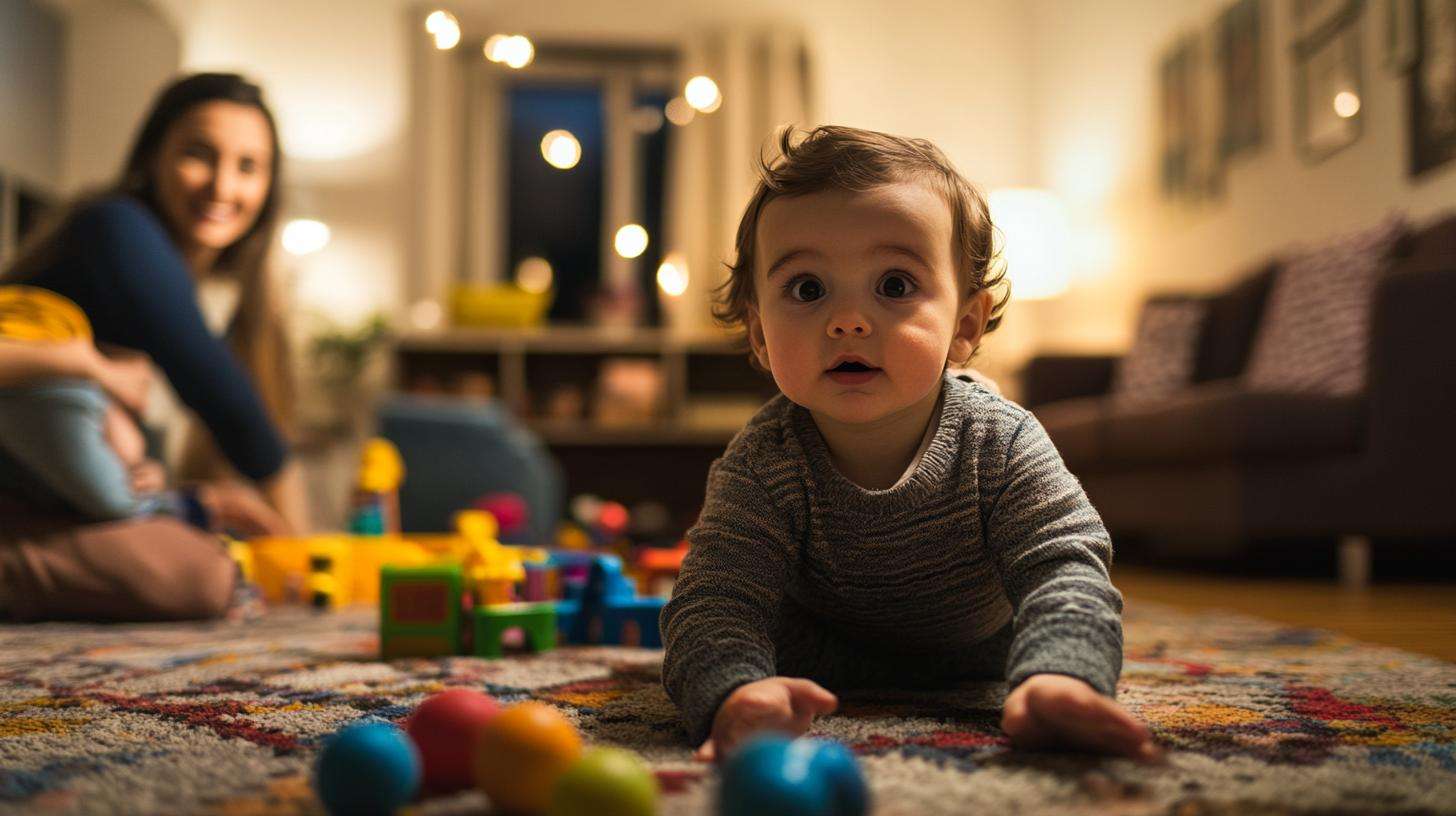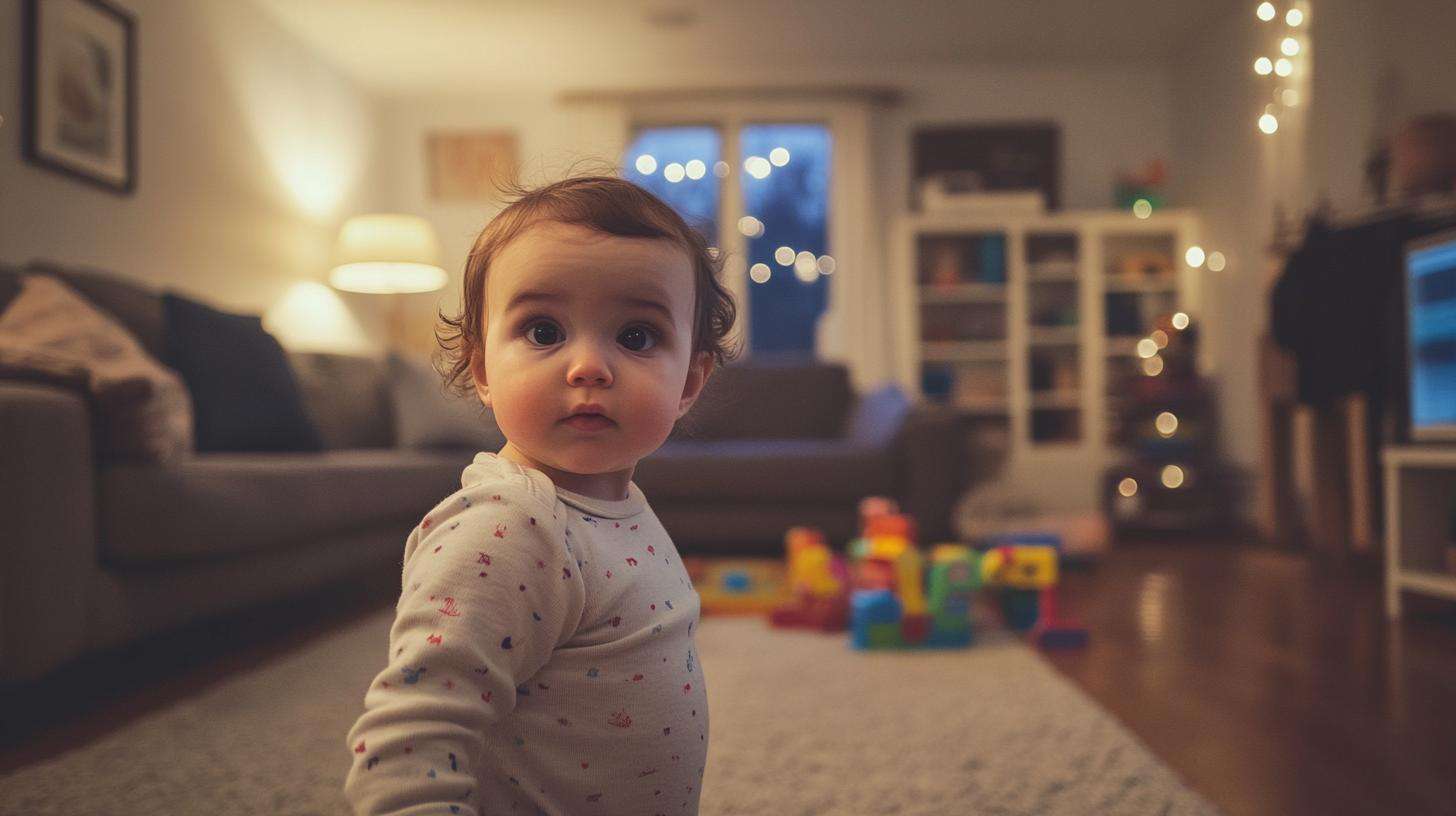Disciplining a 2-year-old can feel like navigating a minefield—one moment you’re laughing at their antics, and the next, you’re faced with a tiny tornado of tantrums. But fear not, because effective discipline doesn’t have to be a battle; it can be a journey of understanding and growth. As parents, we often find ourselves torn between wanting to set boundaries and fostering a loving environment. The key lies in adopting gentle, positive discipline methods that not only guide your toddler but also nurture their emotional development. Imagine this: instead of shouting “no” every time your little one throws a toy, you calmly redirect their energy by suggesting a fun game of tossing soft balls into a basket. This not only teaches them appropriate behavior but also keeps the mood light and playful!
1. Pick Your Battles Wisely
Picture this scenario: your toddler insists on wearing mismatched socks and a superhero cape to the grocery store. Instead of fighting this small battle, consider letting it slide. Choosing your battles wisely helps maintain a positive relationship with your child. Focus on the important rules—like not running into the street or hitting others—and let the little things go. Anna Lucca, a mom from D.C., shared how she allowed her daughter to make a mess before nap time, only to have her clean it up afterward. This approach not only teaches responsibility but also fosters independence.
2. Know Your Child’s Triggers
Every child has their unique set of triggers. For instance, if your 2-year-old loves to unravel toilet paper, try moving it to a higher shelf. Anticipating misbehavior and creating a game plan can save you from many tantrums. If grocery shopping is a challenge, bring along a small toy or snack to keep them occupied. By understanding what sparks their mischief, you can prevent meltdowns before they even start!
3. Practice Prevention
As Dr. Harvey Karp suggests, toddlers often act out when they’re hungry or tired. Planning outings during their peak energy times can make a world of difference. For example, if your child is a morning person, schedule errands for the A.M. and save quiet time for the afternoon. Preparing them for transitions—like ending a playdate—by giving them a heads-up can also ease their anxiety and reduce resistance.
4. Stay Consistent and Calm
Consistency is your best friend when it comes to discipline. If one day it’s okay to jump on the couch and the next it isn’t, your toddler will be confused. Staying calm and neutral in your responses helps reinforce boundaries. Remember, toddlers thrive on routine, so if you always respond the same way, they’ll start to understand the rules better. When they push your buttons, take a deep breath and respond with a firm but calm tone.
5. Offer Choices
Empower your toddler by giving them choices. Instead of demanding they clean up their toys, ask, “Would you like to pick up the blocks or the stuffed animals first?” This simple shift gives them a sense of control and can reduce power struggles. By offering limited options, you guide their behavior while allowing them to feel involved in the decision-making process.
Disciplining a 2-year-old is not just about enforcing rules; it’s about teaching them how to navigate their emotions and the world around them. By embracing positive discipline strategies, you’re not only shaping their behavior but also building a strong foundation for their emotional intelligence. So, the next time your little one throws a tantrum, remember: it’s all part of the beautiful chaos of parenting!
toddler discipline strategies
How to Discipline a 2-Year-Old: Effective Strategies for Gentle Parenting
Disciplining a toddler can be one of the most challenging aspects of parenting. As children begin to explore their independence, they often test boundaries, leading to frustrating situations for parents. However, effective discipline doesn’t have to be harsh or punitive. In fact, many experts advocate for positive discipline methods that not only correct behavior but also nurture emotional growth and self-esteem. This article will explore 14 effective strategies for disciplining a 2-year-old, focusing on understanding their developmental stage and employing gentle yet firm techniques.
Understanding the Developmental Stage of a 2-Year-Old
At the age of two, children are curious, energetic, and often impulsive. They are beginning to develop language skills but may struggle to express their feelings or understand complex instructions. This developmental stage is characterized by:
- Curiosity: Toddlers are eager to explore their environment.
- Testing Limits: They often push boundaries to see what they can get away with.
- Emotional Outbursts: Tantrums are common as they struggle to communicate their needs.
Understanding these traits is crucial for effective discipline. Instead of viewing misbehavior as defiance, recognize it as a natural part of their development.
1. Pick Your Battles
As a parent, it’s essential to prioritize which behaviors are truly problematic. If you’re constantly saying “no,” your child may tune out your warnings. Focus on significant issues like safety and aggression, while allowing minor annoyances to slide. For instance, if your child insists on wearing mismatched socks, consider letting it go. This approach fosters a positive relationship and encourages cooperation.
2. Know Your Child’s Triggers
Every child has specific triggers that lead to misbehavior. By identifying these, you can prevent issues before they arise. For example, if your child tends to act out when hungry, ensure they have a snack before outings. If they enjoy unrolling toilet paper, simply place it out of reach. Anticipating and addressing these triggers can save you from many frustrating moments.
3. Practice Prevention
Preventive measures can significantly reduce misbehavior. Schedule activities during your child’s peak energy times and prepare them for transitions. For example, if a playdate is ending, give them a heads-up to help them adjust. This proactive approach can minimize tantrums and create a smoother experience for both of you.
4. Be Consistent and Unfazed
Consistency is key in discipline. If your rules change frequently, your child will become confused. Establish clear boundaries and stick to them. When your child tests these boundaries, respond calmly and consistently. This helps them understand the consequences of their actions.
5. Don’t Get Emotional
Staying calm during challenging moments is crucial. If you react with anger, your child may focus more on your tone than the message you’re trying to convey. Instead, take a deep breath and calmly address the behavior. For instance, if they hit a sibling, calmly explain that hitting is not acceptable and redirect their energy to a more appropriate activity.
6. Listen and Repeat
Validating your child’s feelings can help diffuse conflicts. If they are upset because they can’t have a cookie, acknowledge their feelings: “I understand you’re upset because you want a cookie.” This shows them that their emotions are valid, even if the desired outcome isn’t possible.
7. Focus on Simple “Do’s” Instead of “Don’ts”
Instead of telling your child what not to do, focus on what they can do. For example, instead of saying, “Don’t jump on the couch,” say, “Let’s jump on the floor!” This positive reinforcement provides clear alternatives and encourages good behavior.
8. Offer Choices
Giving your child choices can help them feel a sense of control. Instead of demanding they clean up their toys, ask, “Would you like to pick up your blocks or your books first?” This empowers them to make decisions while still guiding them toward the desired behavior.
9. Watch Your Words
How you communicate matters. Instead of using “you” statements that may sound accusatory, use “I” messages. For example, say, “I feel worried when you leave your toys on the floor,” instead of, “You always leave your toys everywhere.” This approach fosters understanding and reduces defensiveness.
10. Teach Empathy
Helping your child understand the impact of their actions on others is vital. Use simple language to explain feelings: “When you grab a toy from your friend, it makes them sad.” Teaching empathy encourages them to consider others’ feelings and promotes positive interactions.
11. Rethink Time-Outs and Taking Things Away
While time-outs can be a common disciplinary method, they may not always be effective for toddlers. Instead of isolating them, try to connect consequences to their behavior. If they hit a sibling, limit their access to the toy involved until they can demonstrate safe play. This approach reinforces the lesson without damaging your relationship.
12. Talk About Options
When your child is upset, help them brainstorm alternative ways to express their feelings. For example, if they want a toy another child is playing with, ask, “What could you do to ask your friend to share?” This encourages problem-solving and teaches them to express their needs appropriately.
13. Reward Good Behavior
Positive reinforcement can be a powerful tool. When your child behaves well, acknowledge it with praise or small rewards. For instance, if they clean up their toys without fuss, celebrate their effort. This reinforces good behavior and encourages them to repeat it in the future.
14. Stay Positive
It’s essential to maintain a positive outlook, even during challenging moments. Avoid venting frustrations in front of your child, as it can undermine your authority. Instead, seek support from trusted friends or professionals. A positive attitude fosters a healthy parent-child relationship and encourages your child to feel secure.
Conclusion
Disciplining a 2-year-old can be a daunting task, but with the right strategies, it can also be a rewarding experience. By understanding your child’s developmental stage and employing gentle, consistent discipline techniques, you can guide them toward positive behavior while nurturing their emotional growth. Remember, effective discipline is not about punishment; it’s about teaching and guiding your child as they navigate their world. Embrace the journey of parenting, and know that you’re not alone in this endeavor!

| Key Points | Details |
|---|---|
| Shift from Corporal Punishment | Modern parenting favors gentle and positive discipline methods over corporal punishment like spanking. |
| Setting Protective Rules | Establish rules to prevent aggressive, dangerous, and inappropriate behaviors in toddlers. |
| Benefits of Positive Discipline | Positive discipline supports emotional regulation, cognitive skills, and self-esteem in toddlers. |
| Pick Your Battles | Focus on significant issues and let minor annoyances slide to maintain a good relationship. |
| Know Your Child’s Triggers | Identify and manage situations that lead to misbehavior by anticipating triggers and planning accordingly. |
| Practice Prevention | Address potential issues by ensuring toddlers are well-fed, rested, and prepared for transitions. |
| Be Consistent | Maintain consistent reactions to behaviors to avoid confusing the child with mixed signals. |
| Stay Calm and Neutral | Avoid emotional outbursts; a calm demeanor helps in effectively managing toddler behavior. |
| Listen and Validate | Show understanding of your child’s feelings to help reduce frustration and conflict. |
| Focus on Do’s Instead of Don’ts | Provide clear, positive instructions rather than focusing on negative behaviors. |
| Offer Choices | Give toddlers limited choices to foster a sense of control and reduce resistance. |
| Use “I” Messages | Communicate feelings using “I” statements to avoid implying rejection of the child. |
| Teach Empathy | Help toddlers understand the impact of their actions on others to foster empathy. |
| Reconsider Time-Outs | Time-outs may be ineffective; focus on logical consequences related to the behavior. |
| Discuss Options for Expression | Encourage safe ways for toddlers to express emotions and discuss potential consequences. |
| Reward Good Behavior | Use verbal praise and occasional rewards to reinforce positive behaviors. |
| Stay Positive | Avoid negative talk about parenting in front of children to maintain respect and authority. |
| Developmental Understanding | Discipline strategies should adapt based on the child’s developmental stage, from 18 months to 3 years. |


